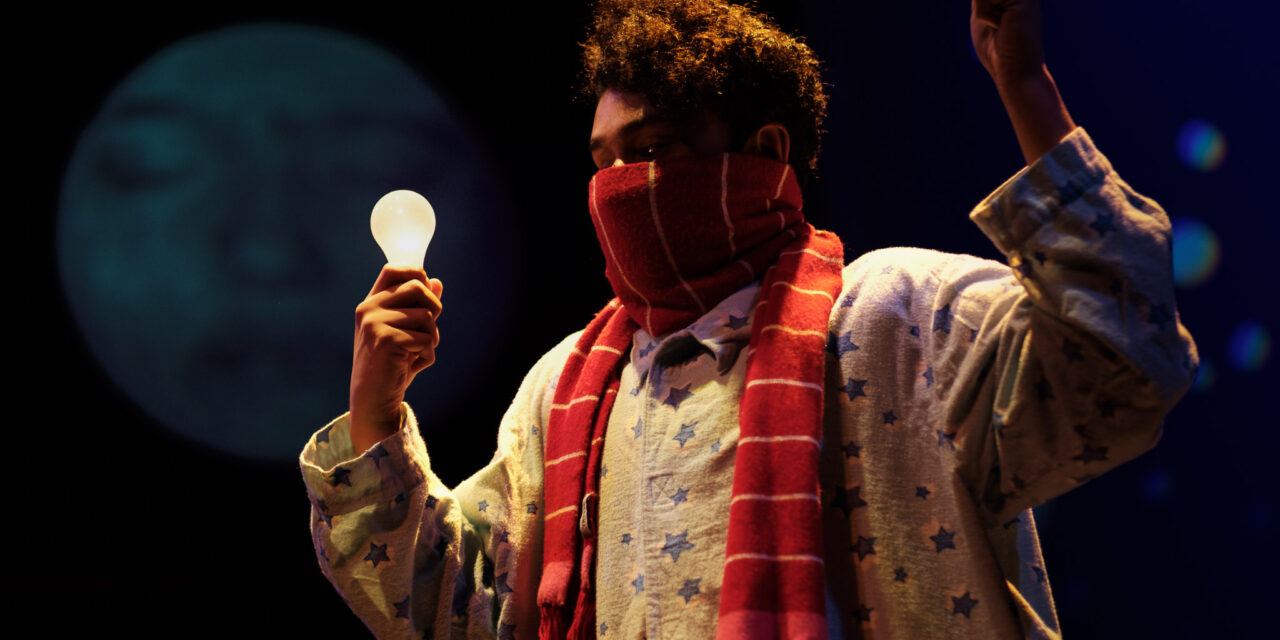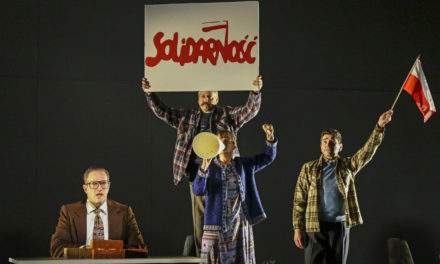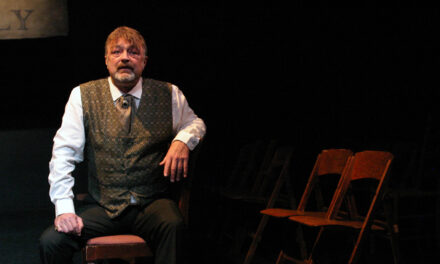How many young-people-of-the pandemic-does it take to screw in a light bulb?
Early in the digital fantasia From the Fishbowl, seven insomniacs, isolated in zoom-like boxes tiled on a screen, stare intently into their phones and scroll . . . and scroll . . . and scroll. Suddenly, one of them, a young man with a shock of curly hair, gives up on his device and wanders out of the screen into an enchanted, blue nightscape of undulating stars and regards a smiling, round-faced moon. Clad in over-sized, flannel pajamas, red scarf wrapped around his nose and mouth, he brings to mind Antoine de Saint-Exupéry’s Little Prince as he approaches a table and sits in front of a chess board. When the light bulb over his head fizzles out, Buster Keaton-like, he silently goes about the business of struggling to change it out for another—but the lightbulb has other plans.
So, just how many young-people-of-the-pandemic does it take to screw in a light bulb? We never quite get the answer to that question because in the fantastic world of From the Fishbowl even the simplest of technologies have lives of their own. And they refuse to cooperate.
In several inter-related vignettes, From the Fishbowl paints moving portraits of the struggles we have with technology when we are forced to meet it in its own space. As conceived by director Wolfe Bowart and his team of collaborators, From the Fishbowl eschews pithy questions and pat answers. It traffics instead in nuance and complexity as it navigates the joys and horrors, the struggles and victories of our current digital moment.
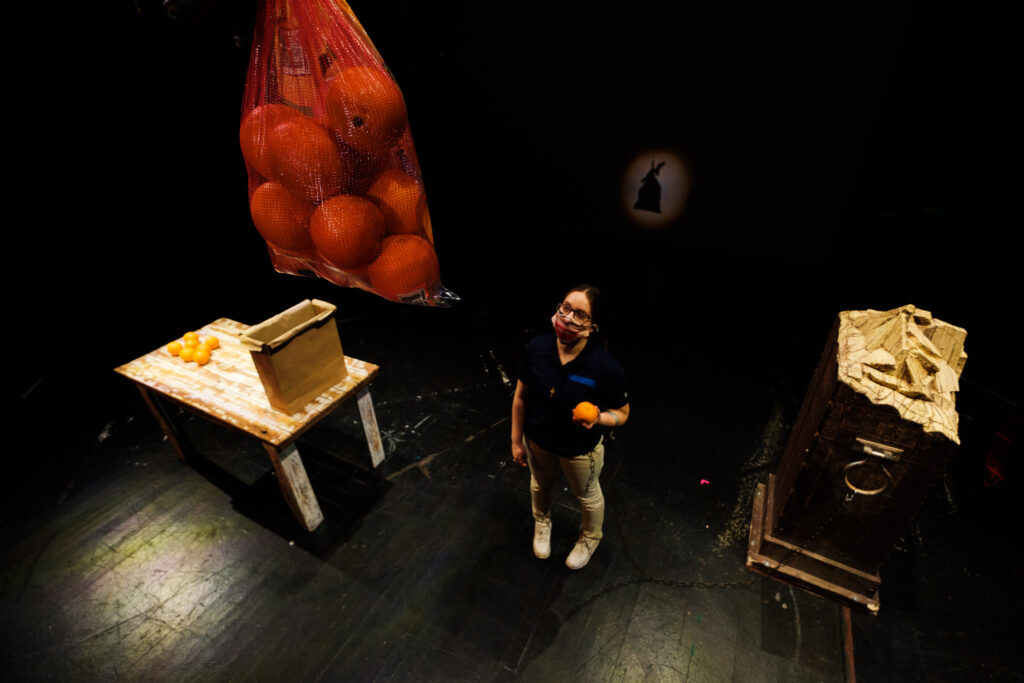
An asylum seeker lives her new life as a supermarket cashier. Sarahy Gomez thinks she has found freedom, but the heavy chain around her wrist tells another story in From the Fishbowl. Photo Julius Schlosburg
From the Fishbowl—which premiered on April 2nd, 2021 and is available to stream through April 18th, 2021—is a new work of physical and visual theater directed by Wolfe Bowart and written in collaboration with The Scoundrel & Scamp Theatre and The University of Arizona’s Theatre Studies students. This play, which is subtitled “new voices and new visions from a world, interrupted”, was created over the course of a challenging year. In response to the COVID-19 pandemic, the production shifted venues, rehearsal formats, and evolved into a multimedia performance. From the Fishbowl was filmed almost exclusively in the homes and rooms of the cast of the production. The cast only came together (socially distanced with masks) in the last three days of rehearsal to capture the stage footage. Only one actor is on stage at a given time, but they are constantly accompanied in this imaginative space by digital avatars, mischievous objects, and the ghosts of productions past (as evidenced by the black rehearsal floor scarred by the spike tape that once outlined platforms and staircases).
The piece is entirely devised. Lighting designer Forrest Tallbull reports that when he joined the collaboration, “there was no script or outline. Wolfe [Bowart, director] wanted to hear ideas from the entire creative team, including the actors, designers, and even the stage managers. Wolfe said, ‘you have the stage to talk to the world—what would you say?’ That was the starting point of the creative process.” And as it turns out, the creators of From the Fishbowl have much to say.
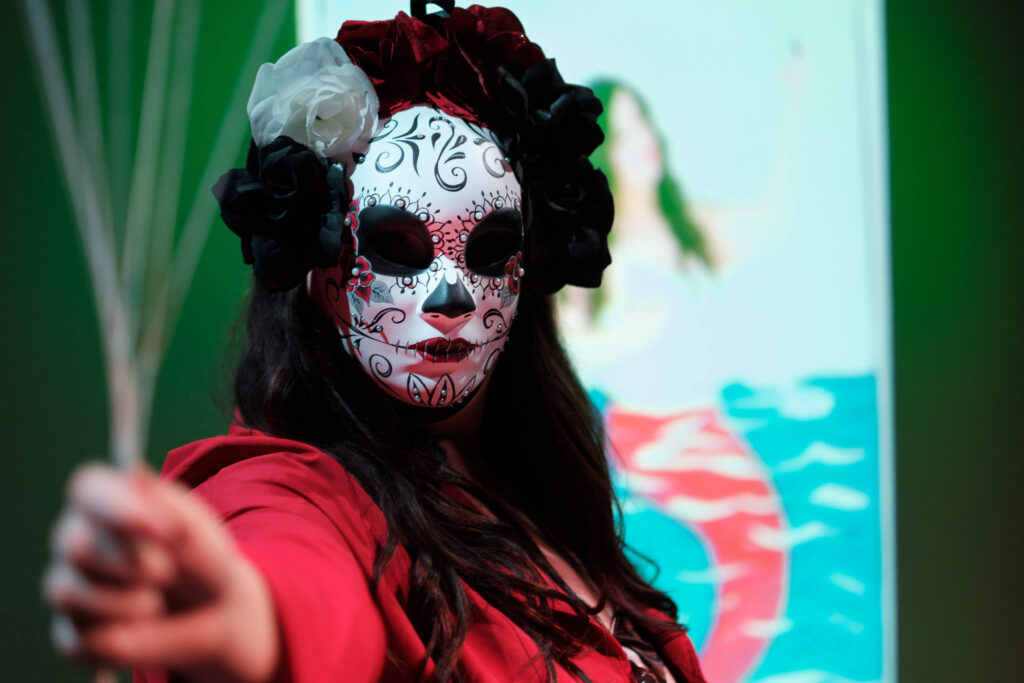
Linda Paola Varela brings all new lotería cards to life in From the Fishbowl. Photo Julius Schlosburg
Using humble means, what Wolfe and company have devised is a wonderland that includes La Catrina, a dancing nose, a gravity-defying potato chip bag, a pugilistic pillow, an assembled machine that transforms dismembered parts of an anthropomorphic tree into rolls of toilet paper, an unruly sea urchin, and a musical-comedy game show—all interspersed with phone calls home to mom. From the Fishbowl, which explores our new ‘normal’ through the lenses of early cinema and stage illusion, delights and entertains, but it also makes one think about what it must be like to grow up during this pandemic.

Kiana Minor plays dual roles in From the Fishbowl. Photo Julius Schlosburg
We all face crises of identity as we struggle to come of age. I went through my own, questioning who I was and where I fit in as an overweight, closeted gay teen in the 1980s (and oh, how watching From the Fishbowl brought back memories of that complicated time). But the young people of From the Fishbowl are trying to figure out who they are and where they fit in in a time of trauma. They are coming of age in a fishbowl. They have unique pressures and challenges, and they want you to know about them.
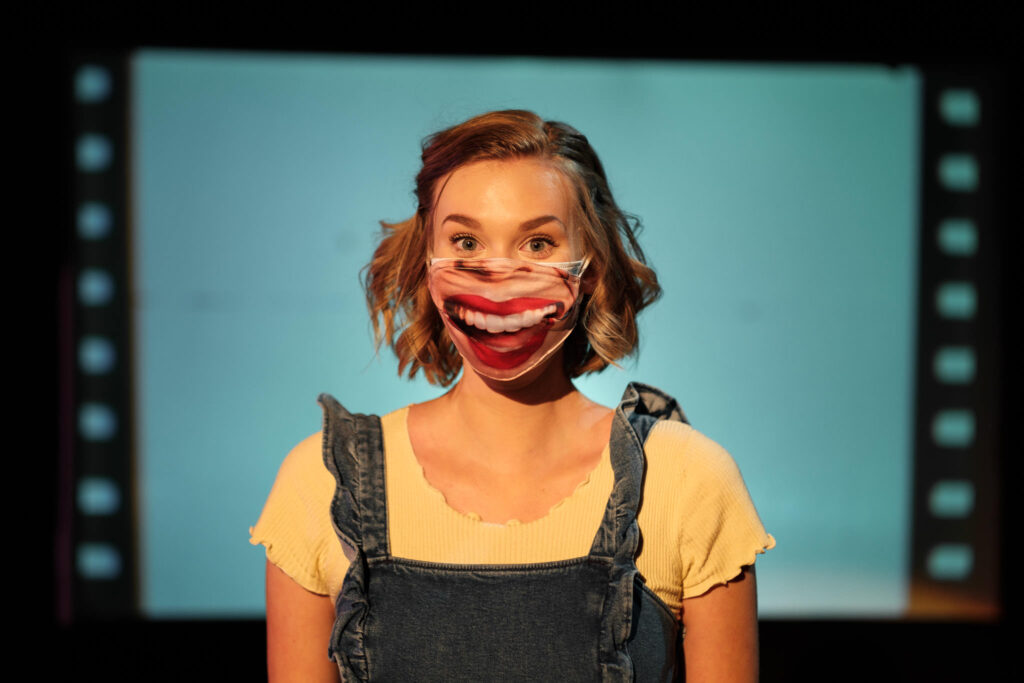
Rachel Newcomb in From the Fishbowl. Photo Julius Schlosburg
From the Fishbowl is an expressionistic time capsule of experiences and emotions. In performance, it documents the moment of a young person struggling to come of age during the pandemic better than any oral history or written diary account ever could.
From the Fishbowl is a co-production of The University of Arizona School of Theatre, Film & Television and The Scoundrel and Scamp Theatre.
From the Fishbowl premiered online on April 1, 2021 and is streaming online from April 2 – 18, 2021.
Cast: MJ Barbee, Sarahy Gomez, Kiana Minor, Rachel Newcomb, Linda Varela, Robbie Voight, Becca Worden. Director: Wolfe Bowart. Video Designer: Linda Varela. Lighting Designer: Forrest Tallbull. Asst. Lighting Designer: Breanna Dassinger. Sound Designers: Jake Dyson & Linnea Fields. Producers: (Scoundrel & Scamp) Bryan Rafael Falcón & Claire Marie Mannle. Stage Manager: (University of Arizona) Tess Postiglione. Asst. Stage Manager: (University of Arizona) Tiffany Fraser. Technical Director: (Scoundrel & Scamp) Tiffer Hill. Master Electrician: (Scoundrel & Scamp) Raulie Martinez. Marketing Associate: (Scoundrel & Scamp) Kathryn Rhea.
Thank you, Kerryn Negus for your generosity and your time.
This post was written by the author in their personal capacity.The opinions expressed in this article are the author’s own and do not reflect the view of The Theatre Times, their staff or collaborators.
This post was written by Michael Schweikardt.
The views expressed here belong to the author and do not necessarily reflect our views and opinions.

